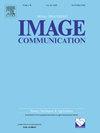用于自动描述性答案评估的划掉的手写单词检测和修复
IF 3.4
3区 工程技术
Q2 ENGINEERING, ELECTRICAL & ELECTRONIC
引用次数: 0
摘要
与客观类型的评价不同,描述性答案评价因其答案的不可预测性和答案的自由写作风格而具有挑战性。因此,描述性答案评价受到了许多研究人员的特别关注。自动答案评价在以下情况下非常有用。它可以避免人工干预评分,消除评分偏差,最重要的是可以节省大量人力。要开发一个高效、准确的系统,还面临着一些挑战。其中一个挑战就是文档清理,包括删除被删除的单词和恢复被删除的单词。在本文中,我们提出了一种用于自动描述性答案评估的划掉手写单词检测和恢复系统。这项工作分为两个阶段。在第一阶段,我们探索将 ResNet50 和对角线(主对角线和次对角线)分割模块结合起来检测字词,然后使用分类网络对划去的字词进行分类。在第二阶段,我们探索将 U-Net 作为骨干网与 Bi-LSTM 结合,根据像素序列之间的关系预测代表被删除字词实际文本信息的像素,以进行还原。在我们的数据集和标准数据集上的实验结果表明,所提出的模型在检测和还原被删除的单词方面效果显著。与最先进方法的比较研究表明,所提出的方法在删除字检测和还原方面优于现有模型。本文章由计算机程序翻译,如有差异,请以英文原文为准。
Struck-out handwritten word detection and restoration for automatic descriptive answer evaluation
Unlike objective type evaluation, descriptive answer evaluation is challenging due to unpredictable answers and free writing style of answers. Because of these, descriptive answer evaluation has received special attention from many researchers. Automatic answer evaluation is useful for the following situations. It can avoid human intervention for marking, eliminates bias marking and most important is that it can save huge manpower. To develop an efficient and accurate system, there are several open challenges. One such open challenge is cleaning the document, which includes struck-out words removal and restoring the struck-out words. In this paper, we have proposed a system for struck-out handwritten word detection and restoration for automatic descriptive answer evaluation. The work has two stages. In the first stage, we explore the combination of ResNet50 and the diagonal line (principal and secondary diagonal lines) segmentation module for detecting words and then classifying struck-out words using a classification network. In the second stage, we explore the combination of U-Net as a backbone and Bi-LSTM for predicting pixels that represent actual text information of the struck-out words based on the relationship between sequences of pixels for restoration. Experimental results on our dataset and standard datasets show that the proposed model is impressive for struck-out word detection and restoration. A comparative study with the state-of-the-art methods shows that the proposed approach outperforms the existing models in terms of struck-out word detection and restoration.
求助全文
通过发布文献求助,成功后即可免费获取论文全文。
去求助
来源期刊

Signal Processing-Image Communication
工程技术-工程:电子与电气
CiteScore
8.40
自引率
2.90%
发文量
138
审稿时长
5.2 months
期刊介绍:
Signal Processing: Image Communication is an international journal for the development of the theory and practice of image communication. Its primary objectives are the following:
To present a forum for the advancement of theory and practice of image communication.
To stimulate cross-fertilization between areas similar in nature which have traditionally been separated, for example, various aspects of visual communications and information systems.
To contribute to a rapid information exchange between the industrial and academic environments.
The editorial policy and the technical content of the journal are the responsibility of the Editor-in-Chief, the Area Editors and the Advisory Editors. The Journal is self-supporting from subscription income and contains a minimum amount of advertisements. Advertisements are subject to the prior approval of the Editor-in-Chief. The journal welcomes contributions from every country in the world.
Signal Processing: Image Communication publishes articles relating to aspects of the design, implementation and use of image communication systems. The journal features original research work, tutorial and review articles, and accounts of practical developments.
Subjects of interest include image/video coding, 3D video representations and compression, 3D graphics and animation compression, HDTV and 3DTV systems, video adaptation, video over IP, peer-to-peer video networking, interactive visual communication, multi-user video conferencing, wireless video broadcasting and communication, visual surveillance, 2D and 3D image/video quality measures, pre/post processing, video restoration and super-resolution, multi-camera video analysis, motion analysis, content-based image/video indexing and retrieval, face and gesture processing, video synthesis, 2D and 3D image/video acquisition and display technologies, architectures for image/video processing and communication.
 求助内容:
求助内容: 应助结果提醒方式:
应助结果提醒方式:


